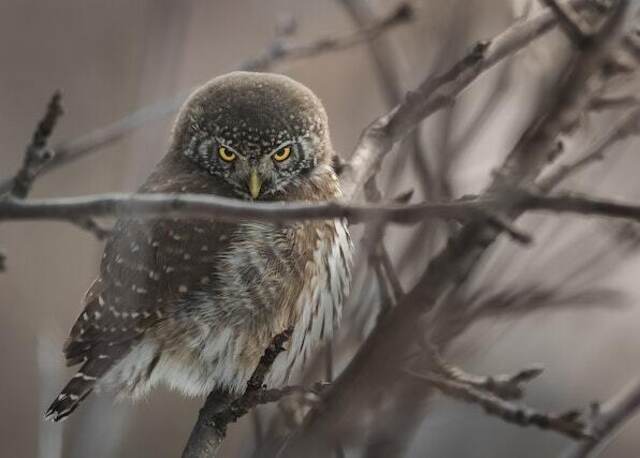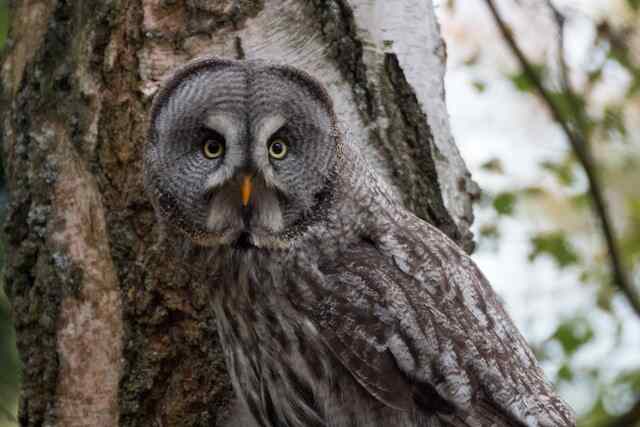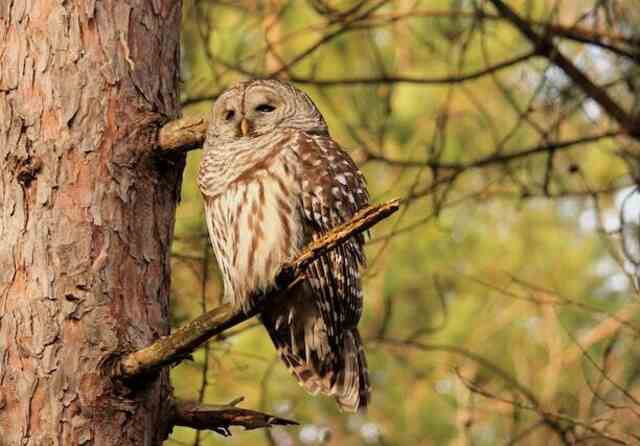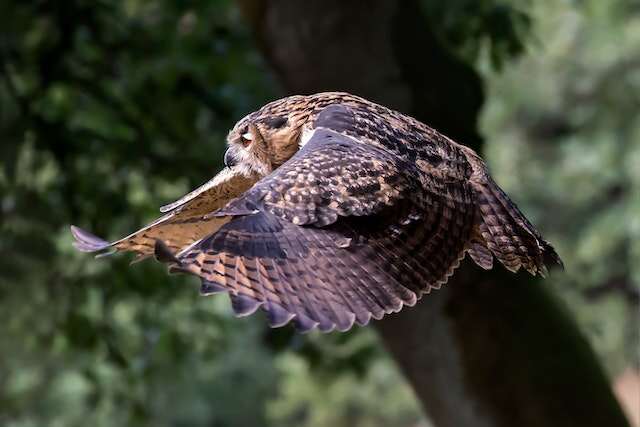Welcome to “Understanding Owls and Bird Consumption: Bird Buffet.” This blog explores the intriguing relationship between owls and birds. Despite their reputation as rodent hunters, owls also prey on various avian species. Join us as we uncover why owls include birds in their diet and what this reveals about these nocturnal predators. Let’s dive into the mysteries of the owl’s bird buffet.
Table of Contents
- 1 Do Owls Eat Birds?
- 2 Types of Owls
- 3 Birds that Owls Eat
- 4 How Often Do Owls Eat Birds?
- 5 FAQs: Do Owls Eat Birds
- 5.1 Do all owls eat birds?
- 5.2 What types of birds do owls eat?
- 5.3 Do owls hunt birds during the day or at night?
- 5.4 Can owls eat birds that are larger than themselves?
- 5.5 How do owls catch birds?
- 5.6 Do owls eat baby birds?
- 5.7 Do owls eat eggs?
- 5.8 Are all bird species equally vulnerable to owl predation?
- 5.9 Do owls eat other types of prey besides birds?
- 5.10 Are owls beneficial to the environment?
- 6 Conclusion
- 7 Author
Do Owls Eat Birds?
Yes, owls do eat birds. Birds make up a significant portion of an owl’s diet, with the types of birds varying depending on the owl’s size and habitat.
From hatchlings, small songbirds to larger birds like crows, hawks, and even other owl species, owls are skilled hunters and can take down prey that is much larger than themselves.
However, birds are not the only thing on an owl’s menu. They also consume a variety of other prey, including rodents, reptiles, amphibians, insects, and more.
Types of Owls that Eat Birds
While most owl species prefer small mammals like mice and voles, some owl species have been known to prey on birds as well. Great horned owls and snowy owls are two examples of owl species that are known to eat birds.
Barred owls, screech owls, and long-eared owls are also known to eat birds, but they tend to focus on smaller prey like insects and small mammals.
Birds that Owls Eat
Owls are opportunistic predators, which means they will eat whatever prey is available to them. As a result, the types of birds that owls eat can vary depending on the owl species and their habitat. Some of the birds that owls may eat include ducks, woodpeckers, crows, mockingbirds, jays, and other small birds.
How Often Do Owls Eat Birds?
While owls do eat birds, it is not their primary source of food. Birds typically only account for about 10% of an owl’s diet. However, considering that owls need to eat every day, this still amounts to quite a few birds per owl every year.
The frequency with which owls eat birds can also vary depending on the season and the availability of other prey. It is worth noting that owls do not just eat the meat of their prey. They also consume bones, fur, and feathers, which they cannot digest.
Owls regurgitate these indigestible parts of their prey in the form of pellets, which can provide valuable information to birdwatchers and researchers about what owls are eating.
In conclusion, while birds are not the primary source of food for most owl species, they are still an important part of their diet.
Owls are adaptable and opportunistic predators that will eat whatever prey is available to them, including birds, small mammals, reptiles, fish, and insects.
Types of Owls
Great Horned Owls
One of the most formidable owls in North America is the Great Horned Owl, recognized for its size and strength. They are known to eat a variety of prey, including birds, mammals, and reptiles. These animals are known for their opportunistic hunting behavior, as they tend to consume whatever prey is readily available to them.
Great Horned Owls are known to feed on the hatchlings of other large birds like crows, ravens, ospreys, and hawks. In some areas, they are the most important predator of red-tailed hawk chicks.
Snowy Owls
Snowy Owls are large, white owls that are found in the Arctic tundra. They are known to feed on lemmings, which make up the majority of their diet. However, they will also eat other small mammals, birds, and fish. Snowy Owls are opportunistic hunters and will take any prey they can catch and subdue.
Barn Owls
Barn Owls can be seen across the globe and are known to be a medium-sized species of owl. They are known to feed on small mammals, such as mice and voles, as well as birds. Barn Owls are known for their unique heart-shaped facial disc, which helps them locate prey in the dark.
Screech Owls
Screech Owls are small owls that are found throughout North and South America. They are known to feed on a variety of prey, including insects, small mammals, and birds.
Eastern screech-owls prey on small birds such as blue jays, titmice, mockingbirds, and woodpeckers. They also feed on insects, small mammals, and reptiles. Western screech-owls have a varied diet that includes small mammals like mice and voles, in addition to birds.
Short-Eared Owls
Short-Eared Owls are medium-sized owls that are found throughout the world. They are known to feed on small mammals, such as mice and voles, as well as birds. Short-Eared Owls are unique in that they are diurnal, which means they are active during the day.
Long-Eared Owls
Long-Eared Owls are medium-sized owls that are found throughout the world. They are known to feed on small mammals, such as mice and voles, as well as birds. Long-Eared Owls are named for their long ear tufts, which are not actually ears but are used to communicate with other owls.
Birds that Owls Eat
Owls are known for their hunting skills and their ability to prey on a wide variety of birds. They are opportunistic hunters and will eat any bird that they can catch. The types of birds that owls eat vary depending on the species of owl and their geographical location. In this section, we will discuss some of the most common birds that owls eat.
Songbirds
Songbirds are a common prey for many species of owls. These small birds, such as finches, mockingbirds, and jays, are often found in wooded areas and make easy targets for owls. Owls are able to catch these birds by swooping down from above and snatching them up with their sharp talons.
Woodpeckers
Woodpeckers are another common prey for owls. These birds are often found in trees and are known for their distinctive drumming sounds. Owls are able to locate woodpeckers by listening for their calls and then swooping down to catch them.
Crows and Ravens
Crows and ravens are larger birds that are also preyed upon by owls. These birds are known for their intelligence and are often found in groups. Owls are able to catch these birds by surprising them and catching them off guard.
Ducks and Chickens
Owls are also known to prey on ducks and chickens. These birds are often found near bodies of water or in rural areas. Owls are able to catch these birds by swooping down from above and grabbing them with their talons.
Ospreys and Hawks
Owls are also known to prey on other birds of prey, such as ospreys and hawks. These birds are often found near bodies of water and are known for their hunting skills. Owls are able to catch these birds by surprising them and catching them off guard.
How Often Do Owls Eat Birds?
Frequency of Bird Consumption
Owls are known to be nocturnal hunters, and they feed on a variety of prey items, including birds. However, the frequency of bird consumption depends on the species of owl and its habitat.
According to Birdfact, great horned owls are the most important predator of red-tailed hawk chicks in some areas.
They also feed on the hatchlings of other large birds like crows, ravens, ospreys, peregrine falcons and hawks.
In general, owls eat both baby and adult birds, and the frequency of bird consumption varies based on the availability of other prey items.
Other Prey Items
Apart from birds, owls also feed on a variety of other prey items, including squirrels, rabbits, mice, rodents, small mammals, insects, amphibians, reptiles, fish, fruit, and even dogs.
According to ABC Birds, a few species of owls mostly eat fish, such as Ketupa (fish-owl) and Scotopelia (fishing-owl) species, found in Asia and Sub-Saharan Africa, respectively.
Owls spend much of their active time hunting for food, and they have been known to eat up to 1,000 rodents in a year.
Owls are known to regurgitate pellets, which are made up of the indigestible parts of their prey items, such as bones, fur, and feathers.
These pellets can provide valuable information about the diet and feeding habits of owls. Some owls are diurnal, which means they are active during the day, while others are nocturnal.
FAQs: Do Owls Eat Birds
Do all owls eat birds?
No, not all owls eat birds. While some species of owls primarily eat birds, others may focus on other prey such as rodents, insects, or fish.
What types of birds do owls eat?
Owls may eat a variety of bird species, including small songbirds, waterfowl, and raptors. The type of bird an owl eats may depend on the owl’s size and hunting habits.
Do owls hunt birds during the day or at night?
Owls are primarily nocturnal hunters, meaning they hunt at night. However, some species of owls may hunt during the day as well, particularly if they live in areas with extended daylight hours.
Can owls eat birds that are larger than themselves?
Yes, some species of owls are able to take down birds that are larger than themselves. Owls have powerful talons and beaks that allow them to catch and kill prey that may be larger than their own body size.
How do owls catch birds?
Owls use a variety of hunting techniques to catch birds, including stealth and surprise attacks, swooping down from above, and pursuing prey in flight.
Do owls eat baby birds?
Yes, owls may eat baby birds, particularly if they are looking for an easy source of food. Nesting birds may be particularly vulnerable to owl predation.
Do owls eat eggs?
Yes, some species of owls may eat bird eggs. Owls may raid nests to feed on eggs or young birds.
Are all bird species equally vulnerable to owl predation?
No, some bird species may be more vulnerable to owl predation than others. For example, ground-nesting birds may be more vulnerable to owl attacks than birds that nest in trees.
Do owls eat other types of prey besides birds?
Yes, owls may eat a variety of prey besides birds, including rodents, insects, fish, and reptiles.
Are owls beneficial to the environment?
Yes, owls play an important role in the ecosystem by helping to control populations of rodents and other small mammals.
Conclusion
In conclusion, owls do eat birds, but the frequency of bird consumption depends on various factors such as the species of owl and its habitat. Owls also feed on a variety of other prey items, including squirrels, rabbits, mice, rodents, small mammals, insects, amphibians, reptiles, fish, fruit, and even dogs.







